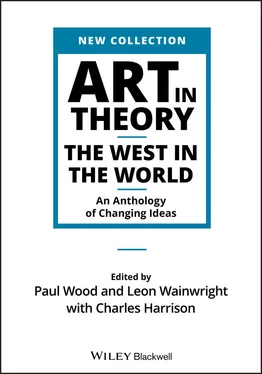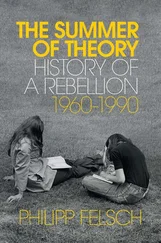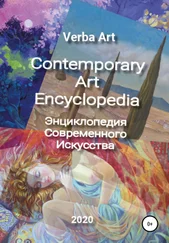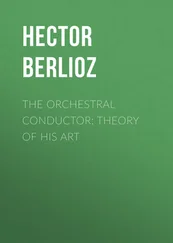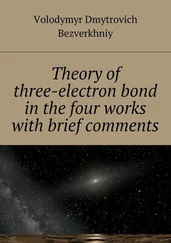If I can weave the Tale I have wrote into the Work I’m abt – tis at the service of the afflicted – and a much greater matter; for in serious truth, it casts a sad Shade upon the World, That so great a part of it, are and have been so long bound in chains of darkness & in Chains of Misery; & I cannot but both respect & felicitate You, that by so much laudable diligence you have broke the one – & by falling into the hands of so good and merciful a family, Providence has rescued You from the other.
And so, good hearted Sancho! adieu! & believe me, I will not forget yr Letter.
Yrs
L. Sterne
IIB6 Manuel Amat y Junyent, Viceroy of Peru (1707–82) Letter on ‘Casta’ paintings
Before the appearance of mechanical reproduction, ‘fine art’, along with its many other social functions, was an important mode of documentation. Until the advent of globalization, however, eighteenth‐century Latin American ‘Casta’ painting remained a footnote in art history, a provincial variant of academic competence deemed to be of little aesthetic or historical interest. But with the twofold change in focus associated with globalization (that is, a felt imperative to ‘broaden’ the Western canon on the one hand, coupled on the other with an equally broadened interest in subject matter) the use of academic art to address issues of ethnic difference became charged with renewed significance. Casta painting was an ethnographically oriented derivative of European academic art which became a way of documenting the hybrid – and stratified – populations of Latin America. The historian Kelly Donahue‐Wallace writes of Casta painting, ‘at its core rested the desire to picture heterogeneous societies, which were largely unknown to Western audiences before Spain’s arrival in the Americas. The paintings also represented a society that accorded privileges and rights … by race, and was therefore motivated to identify and maintain racial distinctions’ (Donahue‐Wallace, Art and Architecture , p. 217). Artists included Juan Rodríguez Juárez (1675–1746) and Miguel Cabrera (1695–1768), both of whom painted series of family groups demonstrating different racial admixtures, usually with a caption spelling out what those admixtures were: ‘mestizo’, ‘mulatto’, etc. The present short text is a letter of 1770 from the Viceroy of Peru to Julián de Arriaga, a representative of King Charles III of Spain. This accompanied a shipment of 20 such paintings destined for the Cabinet of Natural History belonging to the king’s son. The extract is taken from Kelly Donahue‐Wallace, Art and Architecture of Viceregal Latin America, 1521–1821 , Albuquerque: University of New Mexico Press, 2008, p. 221.
Your Excellency,
Ardently desiring to contribute to the formation of the Cabinet of Natural History which His Most Serene Prince of Asturias has begun, what I offer will contribute but little to his enlightenment but is one of the principal examples of the rare products found in these parts, the notable mutation of appearance, figure, and color that results from the successive generations of the mixture of Indians and Blacks, which are usually accompanied proportionally by inclinations and properties. With this idea, I ordered copied and sent twenty canvases, described in the accompanying registry; and I will continue urging the completion of these combinations until they are finished, if it is that this humble product of my humility finds some acceptance by Our Prince and Lord by way of Your Excellency’s hand. For better understanding, the order of the descendents are graduated by numbers; it should serve as key that the son or daughter of the first couple is, according to his or her sex, father or mother in the next; and that of the next couple in the third, and so on until the end of those which are now copied.
May God preserve Your Excellency for many years.
Lima 13 May 1770 … Sr D. Manuel de Amat
IIB7 Ignatius Sancho (1729–80) Letter to Jack Wingrave
This second letter by Sancho has a sharper edge than his letter to Sterne. Composed over a decade later for the son of a friend working for the East India Company, who had written to his father from Bombay decrying the deceit and dishonesty of the native inhabitants, here Sancho squarely holds the British responsible for the ills of their colonies, east and west alike. In it Sancho evinces the double consciousness of a man who sees himself both as black and as British, valuing the freedom he has found in Britain but determined to condemn the racism on which so much of its growing prosperity was founded. Such letters have been described by Sancho’s modern editor as ‘the first published challenges to slavery and the slave trade by a person of African descent’ (Carretta, Letters , 1998, p. xxxi). As such, they make a telling counterpoint to texts IIB9, IIC1 and II6. The extracts are taken from Letters of the Late Ignatius Sancho, An African [1782], edited with an introduction and notes by Vincent Carretta, London: Penguin Books, 1998, pp. 130–1.
1778
In some one of your letters which I do not recollect – you speak (with honest indignation) of the treachery and chicanery of the Natives. – My good friend, you should remember from whom they learnt those vices:– the first christian visitors found them a simple, harmless people – but the cursed avidity for wealth urged these first visitors (and all the succeeding ones) to such acts of deception – and even wanton cruelty – that the poor ignorant Natives soon learnt to turn the knavish – and diabolical arts which they too soon imbibed – upon their teachers.
I am sorry to observe that the practice of your country (which as a resident I love – and for its freedom – and for the many blessings I enjoy in it – shall ever have my warmest wishes – prayers – and blessings); I say it is with reluctance, that I must observe your country’s conduct has been uniformly wicked in the East – West‐Indies – and even on the coast of Guinea. – The grand object of English navigators – indeed of all christian navigators – is money – money – money – for which I do not pretend to blame them – Commerce was meant by the goodness of the Deity to diffuse the various goods of the earth into every part – to unite mankind in the blessed chains of brotherly love – society – and mutual dependence:– the enlightened Christian should diffuse the riches of the Gospel of peace – with the commodities of his respective land – Commerce attended with strict honesty – and with Religion for its companion – would be a blessing to every shore it touched at. – In Africa, the poor wretched natives – blessed with the most fertile and luxuriant soil – are rendered so much the more miserable for what Providence meant as a blessing:– the Christians’ abominable traffic for slaves – and the horrid cruelty and treachery of the petty Kings – encouraged by their Christian customers – who carry them strong liquors – to enflame their national madness – and powder – and bad fire‐arms – to furnish them with the hellish means of killing and kidnapping. – But enough – it is a subject that sours my blood – and I am sure will not please the friendly bent of your social affections. – I mentioned these only to guard my friend against being too hasty in condemning the knavery of a people who bad as they may be – possibly – were made worse – by their Christian visitors. – Make human nature thy study – wherever thou residest – whatever the religion – or the complexion – study their hearts. – Simplicity, kindness, and charity be thy guide – with these even Savages will respect you – and God will bless you!
IIB8 William Hodges (1744–97) from Travels in India
Читать дальше
